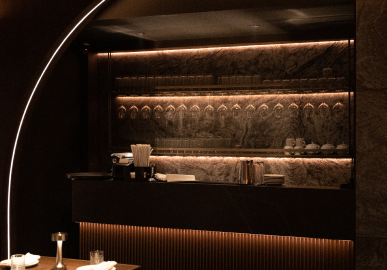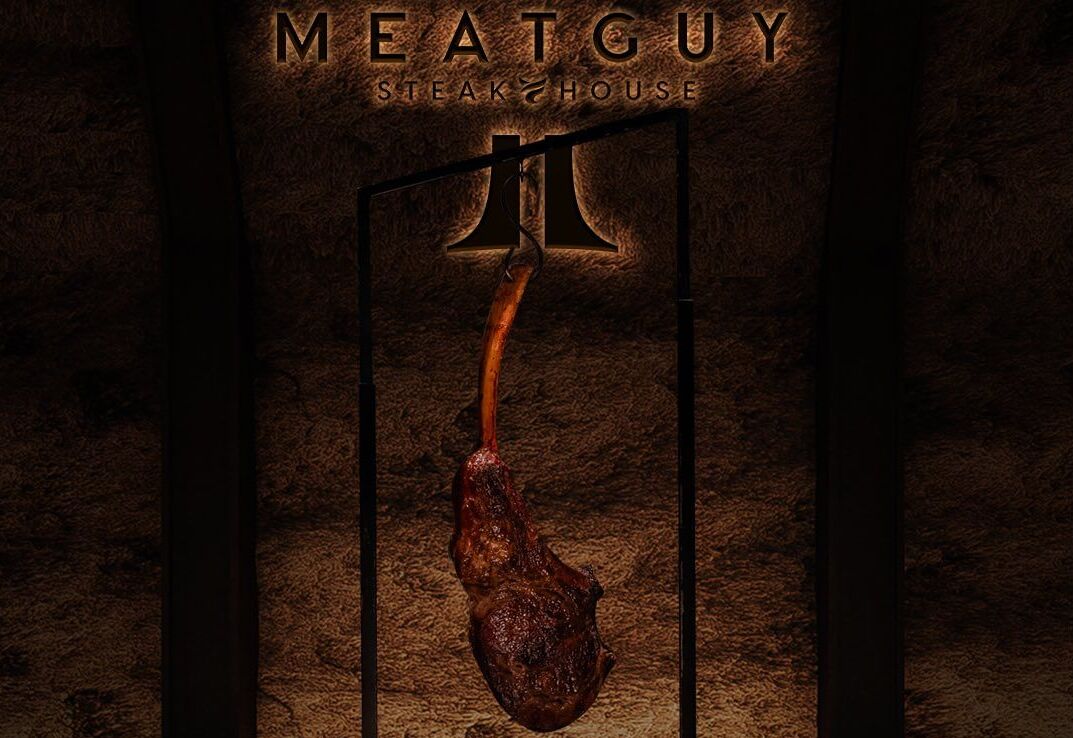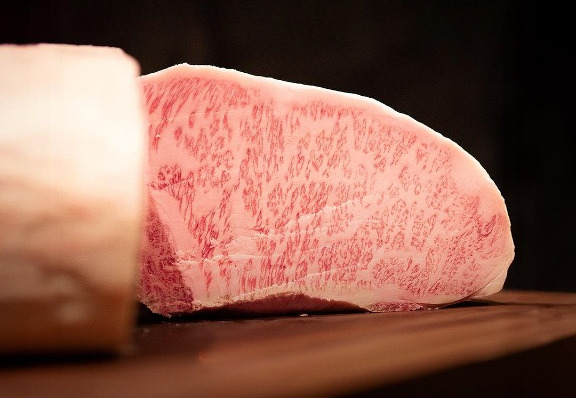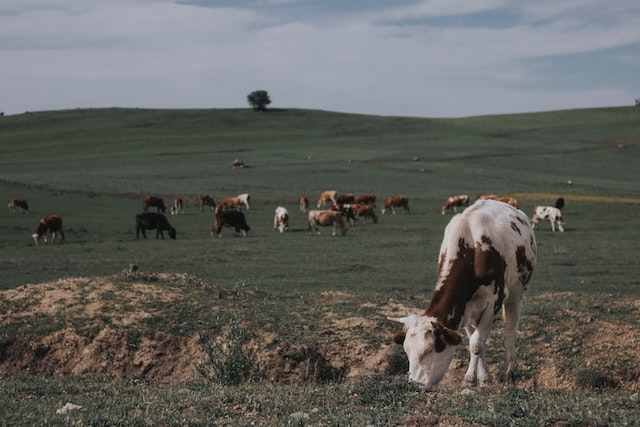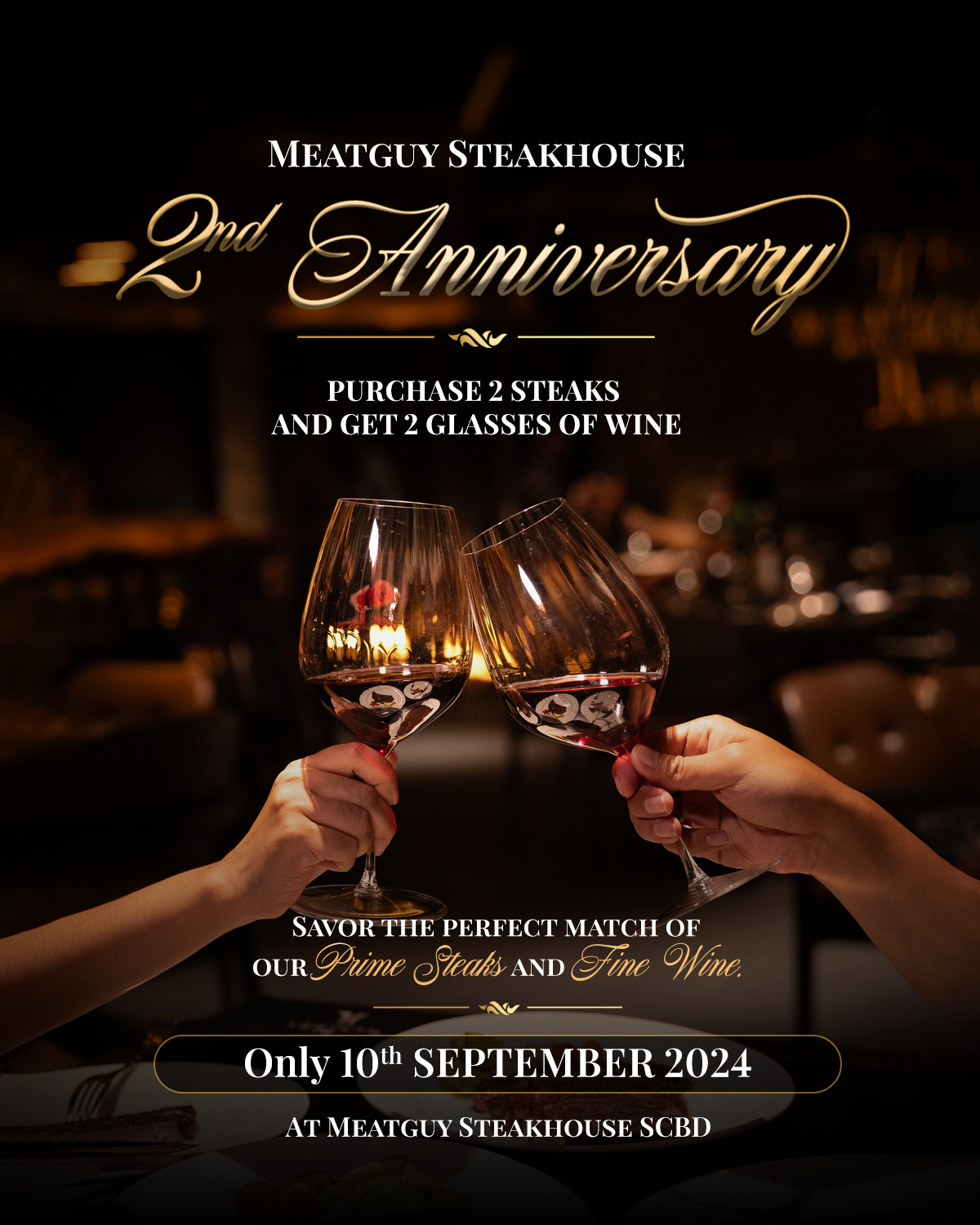Dry-Aged vs. Wet-Aged Steaks
 by
Leo Bisma
by
Leo Bisma  April 17, 2023
April 17, 2023
For steak enthusiasts, understanding the difference between dry-aged and wet-aged steaks is essential for choosing the perfect cut for a memorable dining experience.

At Meatguy Steakhouse, we pride ourselves on our expertise in providing high-quality steaks, ensuring that our patrons have a thorough understanding of the aging processes and their impact on taste and texture.
In this comprehensive guide, we delve into the fascinating world of dry-aged and wet-aged steaks, highlighting the unique qualities and techniques that make our steaks unparalleled.
What is Dry Aging?
Dry aging is a time-honored process of preserving and enhancing the flavor and texture of meat, particularly beef. It involves carefully storing the meat in a controlled environment, where temperature, humidity, and airflow are meticulously monitored to create the ideal conditions for aging.
During the dry aging process, three primary transformations occur:
1. Moisture Evaporation
As the meat ages, moisture is gradually drawn out, concentrating the flavors and creating a more intense taste profile. This process typically results in a weight loss of around 15-30% in the form of water, making the remaining meat denser and richer in flavor.
2. Enzymatic Breakdown
Natural enzymes present in the muscle fibers begin to break down proteins, fats, and connective tissues. This enzymatic action results in a more tender and succulent steak, as the muscle fibers become less resistant and the fat renders more easily during cooking.
3. Flavor Development
The extended exposure to oxygen promotes the growth of beneficial bacteria and fungi on the surface of the meat. These microorganisms produce unique compounds that impart complex flavors and aromas to the meat, which are often described as nutty, buttery, and earthy.
The dry aging process typically lasts for a minimum of 14 days, with many steakhouses, including Meatguy Steakhouse, opting for longer durations of up to 28-60 days to achieve an even more profound depth of flavor and tenderness.
However, it is important to note that dry aging is not suitable for all cuts of meat; it is best suited for large, well-marbled cuts such as ribeye, striploin, and porterhouse.
In the next sections, we will discuss the specific techniques used at Meatguy Steakhouse for dry aging meat and explore the distinct characteristics of our dry-aged ribeye. Stay tuned for an insightful journey into the world of aged steaks and the secrets behind the exceptional offerings at our renowned restaurant.
Read more: Best Meats to Smoke: Beef Ribs, Lamb Shoulder, and More
What Makes Dry-Aged Ribeye Stand Out?
The dry-aged ribeye is a cut that holds a special place in the hearts of steak aficionados, and for good reason. This exceptional steak is known for its unique combination of tenderness, marbling, and complex flavor profile, making it a popular choice among patrons at Meatguy Steakhouse.
In this section, we will explore the distinctive qualities of dry-aged ribeye and uncover the secrets behind its unparalleled taste and texture.
1. Marbling
One of the key factors that set dry-aged ribeye apart from other cuts is its exquisite marbling. The term "marbling" refers to the delicate web of intramuscular fat that runs throughout the meat. These thin veins of fat melt during the cooking process, infusing the meat with rich, buttery flavors and contributing to its juicy and succulent texture.
2. Tenderness
The dry aging process works wonders on the ribeye's tenderness, transforming the already tender cut into an even more delicate and melt-in-your-mouth sensation.
As previously mentioned, the enzymes present in the meat break down proteins and connective tissues during the aging process, making the steak more tender and enjoyable. When you bite into a dry-aged ribeye at Meatguy Steakhouse, you can expect a sublime, velvety texture that will leave you craving more.
3. Complex Flavor Profile
The dry aging process imparts a depth of flavor to the ribeye that is simply unmatched by wet-aged counterparts. The concentration of flavors due to moisture evaporation, combined with the development of unique compounds from the growth of beneficial microorganisms, results in a steak with a rich, nutty, and earthy taste.
This complexity of flavors has made the dry-aged ribeye a favorite among our discerning guests at Meatguy Steakhouse, who appreciate the exceptional culinary experience that it offers.
4. Perfect Cooking Technique
At Meatguy Steakhouse, we understand that a great dry-aged ribeye requires not only the finest cut of meat but also the perfect cooking technique. Our expert chefs carefully monitor the cooking temperature, ensuring that the steak is seared to perfection at right-degree of celsius.
This high-heat searing creates a beautiful crust on the outside while preserving the tender, juicy interior, resulting in a divine contrast of textures and flavors that will leave you in awe.
Dry-aged ribeye's unique qualities make it a standout choice for steak lovers who appreciate the finer things in life. At Meatguy Steakhouse, we take pride in providing our guests with exceptional dry-aged ribeyes, expertly prepared to showcase their unparalleled tenderness, marbling, and complex flavor profile.
Read more: The Best Meats for Grilling: From Steaks to Burgers to Kabobs
How to Age Beef: Wet Aged Steak vs. Dry Aged Steak
When it comes to aging beef, two primary methods are used in the industry: dry aging and wet aging. While we have already discussed the dry aging process in detail, it is essential to understand the differences between these two techniques and how they impact the flavors and textures of the resulting steaks.
In this section, we will explore the wet aging process and compare it with dry aging, providing you with valuable insights into the world of aged steaks.
1. Wet Aged Meat Process:
Wet aging is a more modern and cost-effective approach to aging meat, which involves vacuum-sealing the beef in airtight plastic bags and allowing it to age in its own juices.
This method typically takes place over a shorter period, ranging from 7 to 21 days, and does not require the strict temperature and humidity controls needed for dry aging.
During wet aging, the meat undergoes enzymatic breakdown just as it does in dry aging. However, the absence of moisture evaporation and exposure to air results in some key differences in the final product:
a. Flavor
Wet-aged steaks tend to have a milder and more familiar beef flavor compared to their dry-aged counterparts. The absence of moisture loss and the reduced exposure to air prevent the development of the complex, earthy flavors associated with dry-aged beef. As a result, wet-aged steaks may be more appealing to those who prefer a subtler taste profile.
b. Tenderness
Wet aging does result in a tender steak due to the enzymatic breakdown of proteins and connective tissues. However, the tenderness achieved through wet aging is generally considered to be less remarkable than that of a dry-aged steak. This is partly because the wet aging process does not last as long as dry aging, resulting in less time for the enzymes to work their magic.
c. Texture
Since wet aging does not involve moisture evaporation, the steaks retain more water, giving them a slightly different texture compared to dry-aged steaks. Wet-aged steaks are often described as being more "watery" or "spongy," while dry-aged steaks have a denser, firmer texture.
d. Cost
One advantage of wet aging is its lower cost compared to dry aging. Since there is minimal weight loss due to moisture evaporation and the process does not require specialized facilities, wet-aged steaks are often more affordable for consumers.
2. Wet Aging Process:
Wet aging is a more recent method of aging beef, especially when compared to the centuries-old technique of dry aging. In wet aging, the beef is vacuum-sealed in plastic bags and refrigerated for a period ranging from 7 to 21 days. This process allows the beef to age in its own juices, without exposure to air or the risk of external contaminants.
1. Flavor
Unlike dry aging, which concentrates the beef's flavors by allowing moisture to evaporate, wet aging results in a more subtle and familiar beef flavor. This is because the beef ages in its own juices, which prevents the development of the intense, complex flavors that characterize dry-aged beef. For those who prefer a milder taste, wet-aged beef may be the ideal choice.
2. Tenderness
Both dry and wet aging tenderize beef through enzymatic breakdown, but the processes differ in their outcomes. Wet aging generally results in a tender steak, yet the level of tenderness is often less pronounced than in dry-aged beef. This is largely because wet aging typically occurs over a shorter time frame, providing less time for the enzymes to work their magic on the meat's proteins and connective tissues.
3. Texture
Wet aging and dry aging yield different textures due to the presence or absence of moisture loss. While dry-aged beef has a denser, more concentrated texture due to the evaporation of moisture, wet-aged beef retains more moisture and thus has a slightly spongier, more moist texture.
4. Cost
Due to the lack of moisture loss and the shorter aging period, wet aging is typically more cost-effective than dry aging. This often makes wet-aged steaks more accessible to a wider range of consumers.
Read more: How to Grill the Perfect Filet Mignon: Tips and Techniques for Juicy and Flavorful Steaks
Dry Aged Steak or Wet Aged Steak. Which One To Choose?
Selecting the perfect steak can be a daunting task, especially with the numerous options available, each offering a unique dining experience. In this section, we provide some valuable tips to help you choose the best type of steak based on your personal preferences and budget, while also emphasizing the exceptional offerings at Meatguy Steakhouse.
1. Consider Flavor Preferences
As we have discussed earlier, the primary difference between dry-aged and wet-aged steaks is the intensity and complexity of their flavors. If you enjoy a robust, earthy, and nutty taste, a dry-aged steak is the perfect choice for you. On the other hand, if you prefer a milder and more familiar beef flavor, a wet-aged steak may be more to your liking.
2. Evaluate Tenderness and Texture
The aging process also has a significant impact on the tenderness and texture of the meat. Dry-aged steaks are known for their unparalleled tenderness and dense, rich texture, while wet-aged steaks offer a more subtle tenderness and a slightly "spongier" texture. Consider which characteristics you value most in a steak when making your decision.
3. Assess Your Budget
While dry-aged steaks are highly sought after for their exquisite flavors and tenderness, they tend to be more expensive than their wet-aged counterparts due to the specialized aging process and weight loss from moisture evaporation. If you're working with a limited budget, wet-aged steaks can still offer a delicious and tender dining experience without breaking the bank
4. Consult the Experts
If you're still unsure about which type of steak to choose, don't hesitate to ask the knowledgeable staff at Meatguy Steakhouse for their recommendations. Our team is well-versed in the nuances of different cuts and aging techniques and can guide you towards the perfect steak based on your preferences and dining occasion.
In this comprehensive guide, we have explored the differences between dry-aged and wet-aged steaks, delving into their unique flavors, textures, and aging processes. By understanding these distinctions, you can make informed decisions about the type of steak that best suits your taste buds and budget.
At Meatguy Steakhouse, we take immense pride in offering our guests an exceptional dining experience with our expertly prepared dry-aged steaks. We invite you to visit us and discover the unparalleled quality and taste that sets our steaks apart from the rest. From the first bite to the last, we promise a culinary journey that will leave you craving more.
